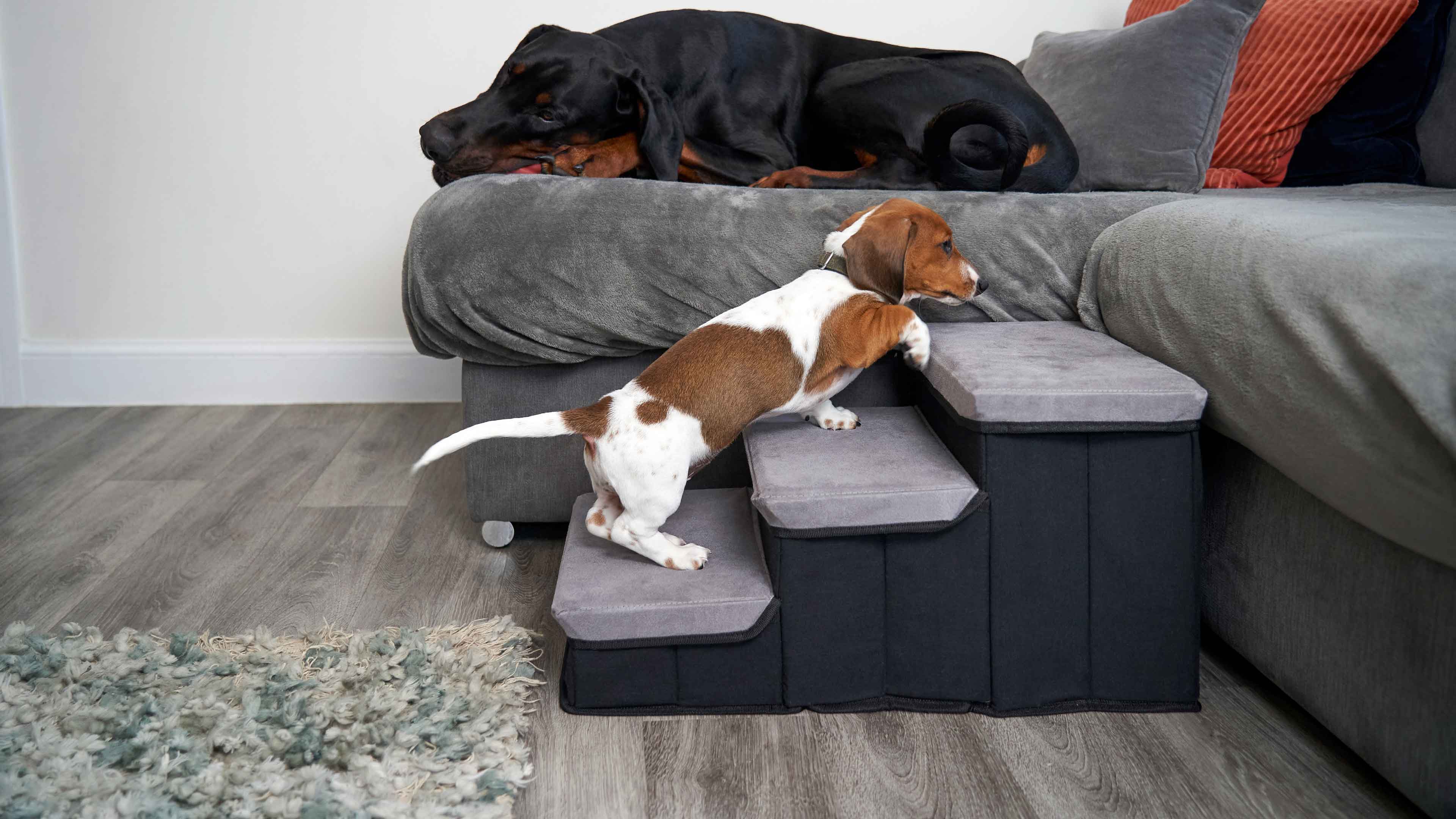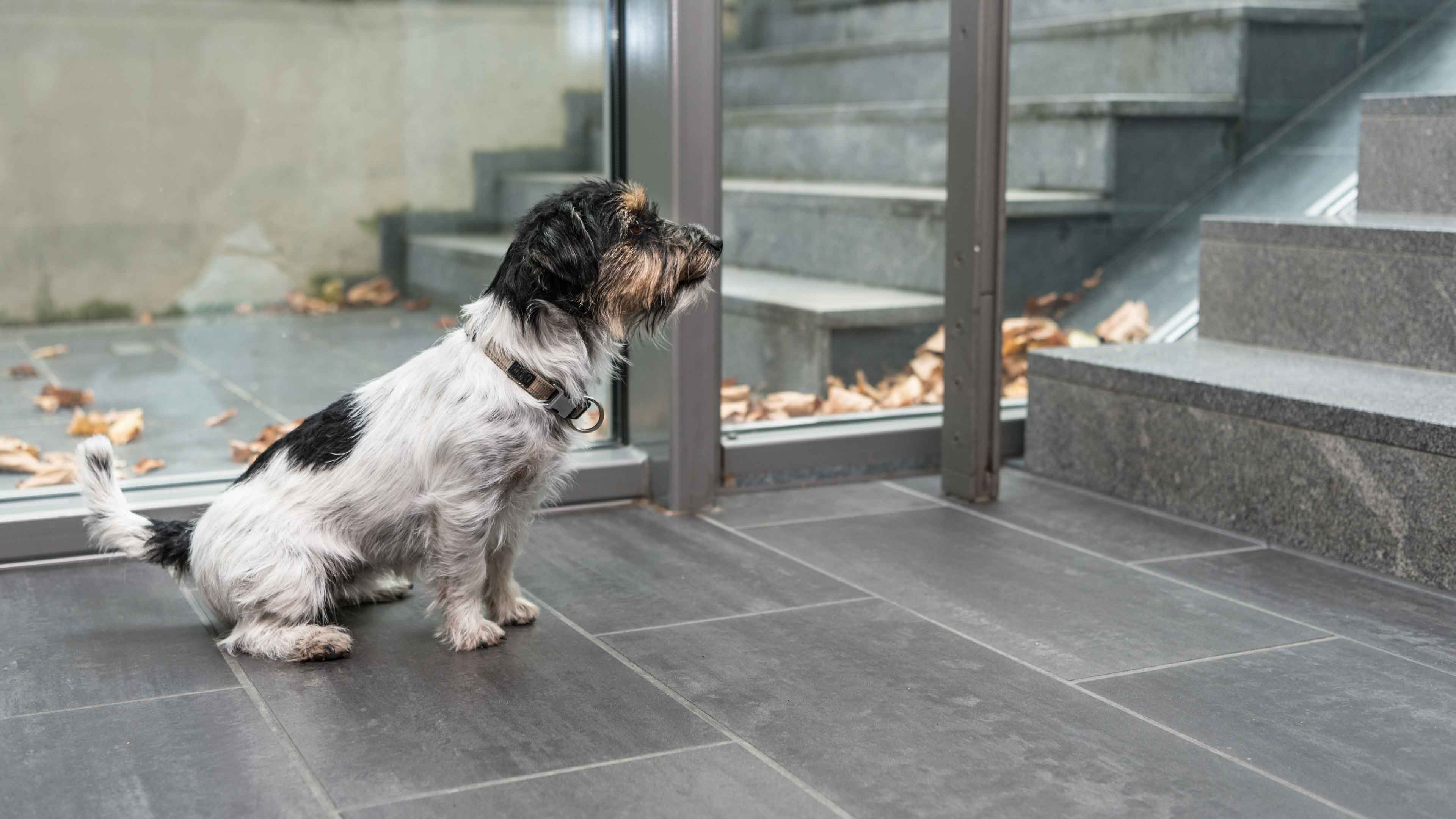how to make an arthritis-friendly home for your dog or cat
Arthritis is an uncomfortable fact of aging; over a certain age, most dogs and cats experience it. While arthritis can slow down your pet, that doesn’t mean there aren’t ways to offer them comfort and support.
I’m Heidi Cooley, DVM, and I’ve been with Banfield for 19 years. During that time, I’ve seen and treated many pets experiencing osteoarthritis, the most common form of arthritis. In this blog, I’d like to discuss ways you can spot if your dog or cat is experiencing arthritis and how to make your house comfortable for them as they age.
Signs of arthritis in dogs
These are some of the common signs that your dog is dealing with arthritis:
- Resistance to jumping on furniture
- Slow or resistant to going up or down the stairs
- Difficulty walking on slippery surfaces
- Difficulty getting in and out of cars
- Difficulty getting up from lying down
- Movement is better once they’ve “warmed up”
- Leg shaking
- Not wanting to be touched or petted
Signs of arthritis in cats
Cats display some of the same symptoms as dogs when it comes to arthritis, plus these additional signs:
- Less jumping and moving around the house
- Less use of cat trees
- Poor litter box habits (going to the bathroom outside the box)
- Eating less food or drinking less water
- Sleeping more
Note: Be sure to mention any concerns to your veterinarian so they can rule out other causes for these symptoms.
How to make your home arthritis-friendly
Though arthritis isn’t curable, there are treatments, and also ways to make your house a safer and more comfortable place for your pets.
Start by keeping your pets on one level. Though ramps are helpful, keeping your dog or cat on the ground is even better. That means instead of having them up on your bed, get them their own orthopedic bed with cushioning (but not so soft they sink into it!) so they can easily get up from lying down.
Make sure your home has suitable surfaces to walk on. In other words, no slippery floors. If you have slippery floors, consider getting nonslip rubber-backed area rugs or carpet runners or keeping your pet out of any room with slippery floors. (Nonslip socks for your pet may help too!) Also, make sure your pet is in a part of your home away from chaos. It can be hard on their bodies if they’re getting bumped into or pushed over.
Always ensure they have easy access to food, water, and the bathroom. Elevated food and water bowls can help reduce neck strain and should be placed on a nonslip food mat.
In addition to these changes at home, weight management, physical therapy, exercises, and massages can also help ease the burden of arthritis. Your vet can discuss medical treatments that may make things easier for both you and your pet.
 Mites and mange
Mites and mange Podcast - Not Just Fluff
Podcast - Not Just Fluff











